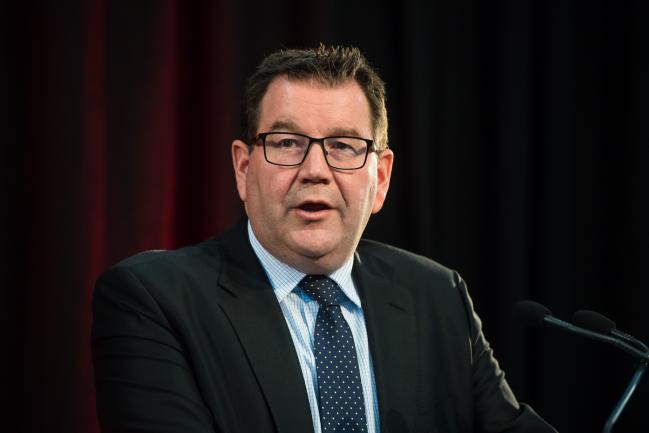 © Bloomberg. Grant Robertson Photographer: Mark Coote/Bloomberg
© Bloomberg. Grant Robertson Photographer: Mark Coote/Bloomberg(Bloomberg) — New Zealand Finance Minister Grant Robertson will use his first budget on Thursday to show how the new center-left government can ramp up public spending while keeping the books in the black.
One of the Labor-led coalition’s key pledges when it came to power was to fix under-investment in infrastructure, saying years of record immigration had stretched resources, caused a housing boom and worsened social inequality. A tax windfall may help Jacinda Ardern’s government meet those ambitions without jeopardizing the nation’s hard-won budget surpluses.
“Robertson is balancing the government’s reputation for responsible fiscal management against a desire to follow through with as many of its pre-election promises as possible,” said Anne Boniface, senior economist at Westpac Banking Corp. in Auckland. “Despite revenue surprises, the government still feels constrained and will probably have to prioritize some of its spending plans.”
This year’s surplus is on track to exceed the NZ$2.5 billion ($1.7 billion) projected in the December fiscal update. Still, Robertson has said he can’t deliver everything he’d like to amid mounting demands for investment at over-crowded schools and hospitals that aren’t fit for purpose. He’s operating under self-imposed debt constraints imposed before the election, to prove that his party could match the center-right as careful managers of the economy.
Robertson last week reiterated his plan to increase net capital spending to NZ$42 billion over the next five years, about a third more than the previous National government proposed.
He’s been helped by the performance of New Zealand’s economy, which has been stoked by strong export prices and rapid population growth. As company profits climbed and unemployment fell, tax revenue has exceeded expectations.
In the nine months through March, core tax revenue was NZ$1.1 billion more than the Treasury Department forecast and much of the variance was expected to persist until the end of the financial year.
Revenue beyond this year will be subject to the economy sustaining its expansion. The Treasury has already signaled that growth in the first half of 2018 is tracking at less than a 3 percent pace, adding to signs that its December projections will be revised lower.
The December outlook included assumptions that the new government’s plan to build 100,000 homes over 10 years would give renewed impetus to the construction industry. That strategy is taking longer to deliver while a post-election drop in business confidence amid uncertainty over labor market reforms may also curb investment and hiring.
Fusion Media or anyone involved with Fusion Media will not accept any liability for loss or damage as a result of reliance on the information including data, quotes, charts and buy/sell signals contained within this website. Please be fully informed regarding the risks and costs associated with trading the financial markets, it is one of the riskiest investment forms possible.
Source: Investing.com





























